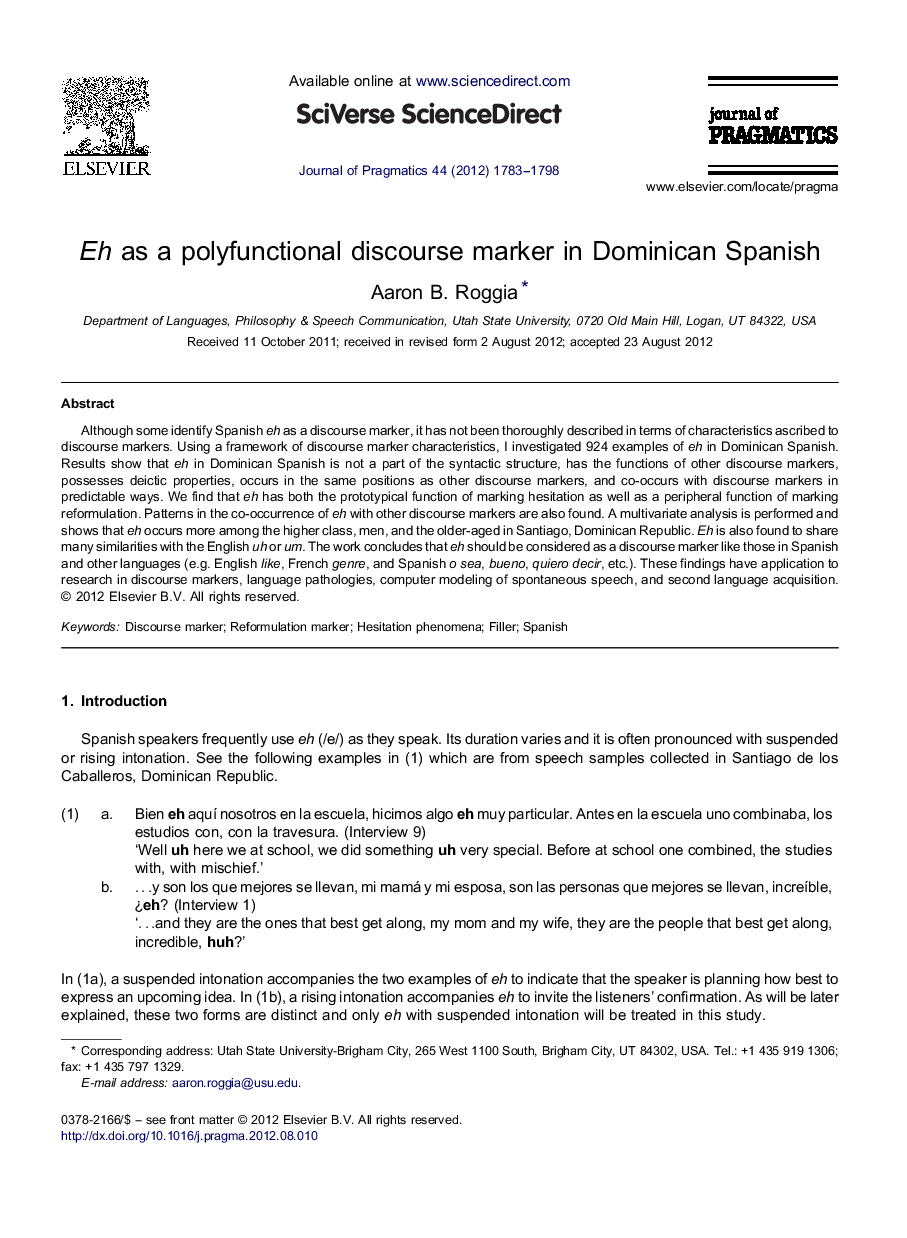| Article ID | Journal | Published Year | Pages | File Type |
|---|---|---|---|---|
| 933063 | Journal of Pragmatics | 2012 | 16 Pages |
Although some identify Spanish eh as a discourse marker, it has not been thoroughly described in terms of characteristics ascribed to discourse markers. Using a framework of discourse marker characteristics, I investigated 924 examples of eh in Dominican Spanish. Results show that eh in Dominican Spanish is not a part of the syntactic structure, has the functions of other discourse markers, possesses deictic properties, occurs in the same positions as other discourse markers, and co-occurs with discourse markers in predictable ways. We find that eh has both the prototypical function of marking hesitation as well as a peripheral function of marking reformulation. Patterns in the co-occurrence of eh with other discourse markers are also found. A multivariate analysis is performed and shows that eh occurs more among the higher class, men, and the older-aged in Santiago, Dominican Republic. Eh is also found to share many similarities with the English uh or um. The work concludes that eh should be considered as a discourse marker like those in Spanish and other languages (e.g. English like, French genre, and Spanish o sea, bueno, quiero decir, etc.). These findings have application to research in discourse markers, language pathologies, computer modeling of spontaneous speech, and second language acquisition.
► In Dominican Spanish, eh has the characteristics of a discourse maker. ► Eh is polyfunctional: it highlights hesitation and reformulation. ► Eh co-occurs with other discourse markers in orderly ‘stacks’ ► In Dominican Spanish, eh occurs more in the higher class. ► Spanish eh and English uh share many similarities.
